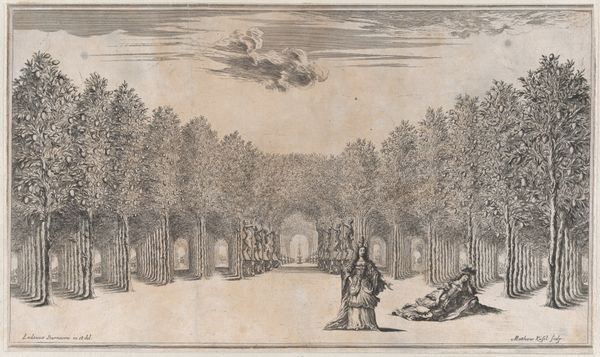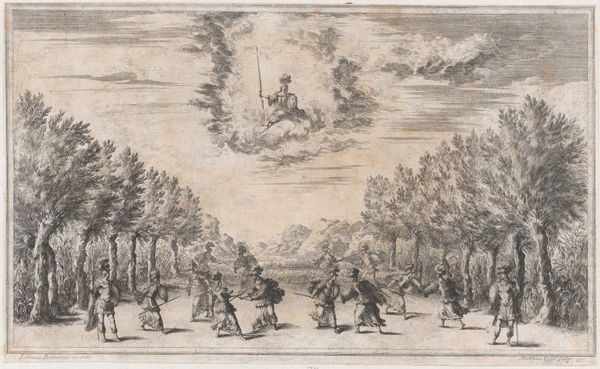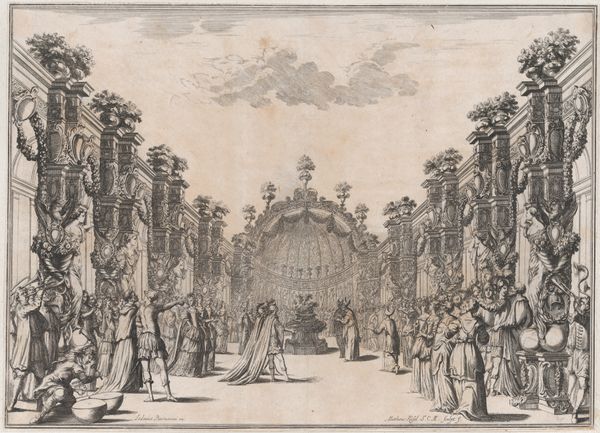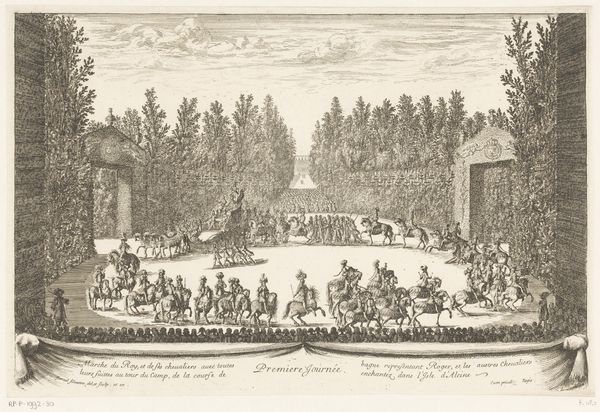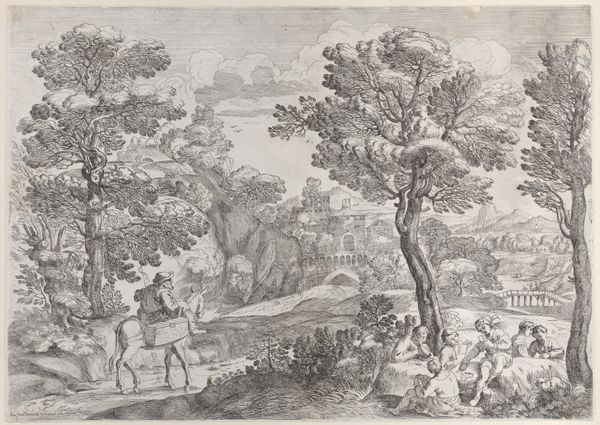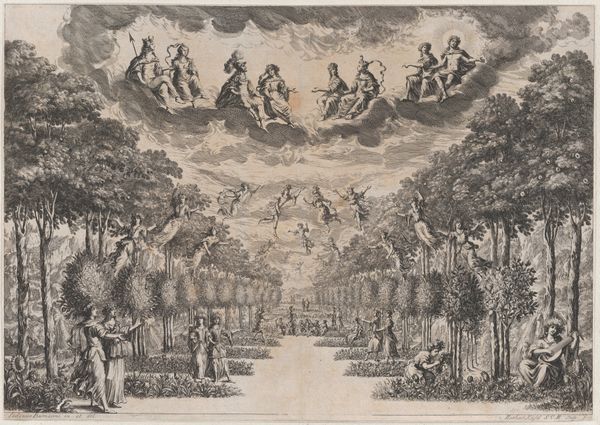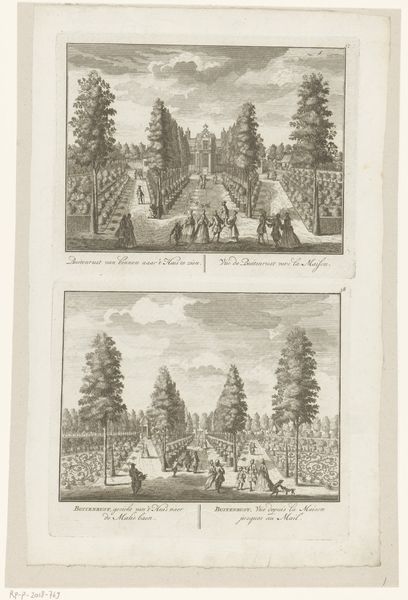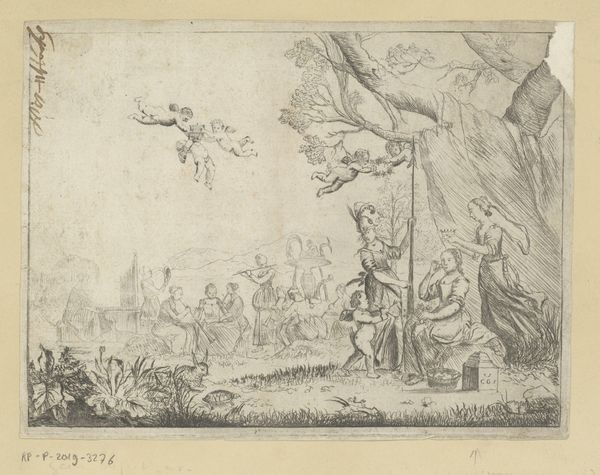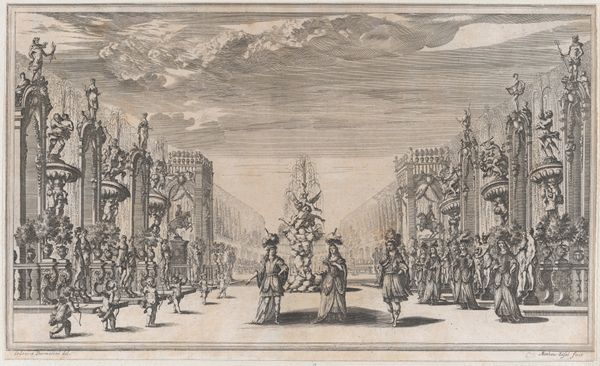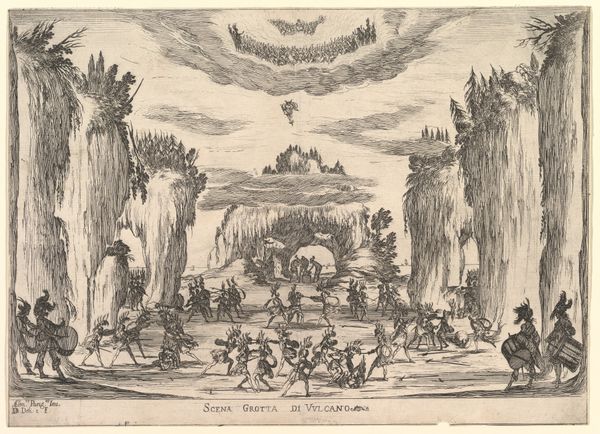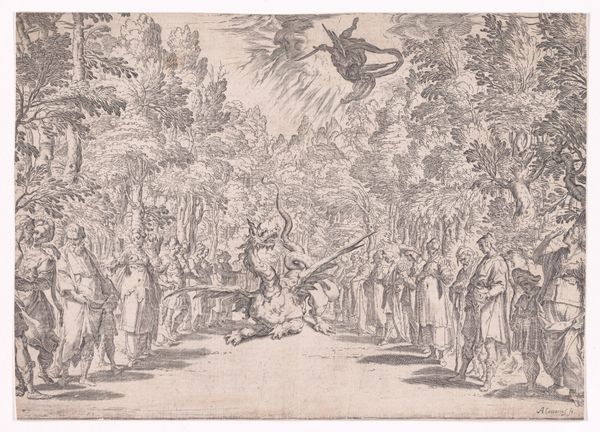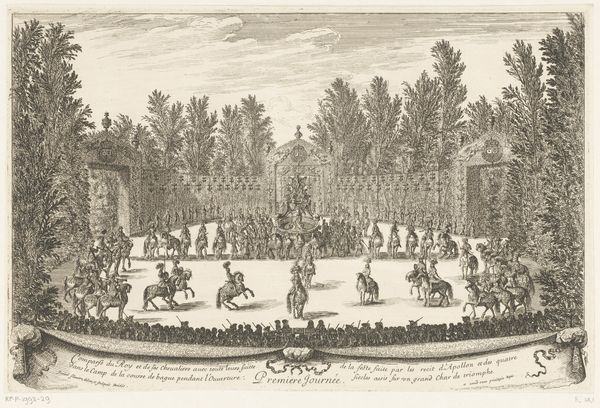
A man and a woman conversing at center, surrounded by a row of young men to the right and young women to the left, Mercury appears at top left corner; set design from 'Il Pomo D'Oro' 1668
0:00
0:00
drawing, print, engraving
#
drawing
#
baroque
# print
#
pencil sketch
#
landscape
#
figuration
#
pen-ink sketch
#
genre-painting
#
history-painting
#
engraving
Dimensions: Sheet (Trimmed): 10 7/16 × 17 1/4 in. (26.5 × 43.8 cm)
Copyright: Public Domain
This print, made by Mathäus Küsel, gives us a glimpse into the world of 17th-century theatrical set design. It's made with the intaglio process, where the design is incised into a metal plate, and then ink is carefully applied and wiped, leaving it only in the etched lines. The printmaker then presses paper against the plate, transferring the image. Looking closely, you can see how the fine lines create a sense of depth and texture, from the dense foliage to the flowing garments of the figures. But beyond the visual representation, this print speaks volumes about the social context of theatre production. Stage design was a collaborative effort, involving skilled carpenters, painters, and costume makers. Each contributed to the spectacle. Prints like this one were important in circulating designs and ideas, influencing theatrical productions across Europe. By focusing on the material process of printmaking, we gain insight into the labor, skill, and cultural exchange that shaped the world of early modern theatre. It reminds us that even seemingly simple images carry complex stories about the hands that made them and the societies that consumed them.
Comments
No comments
Be the first to comment and join the conversation on the ultimate creative platform.
